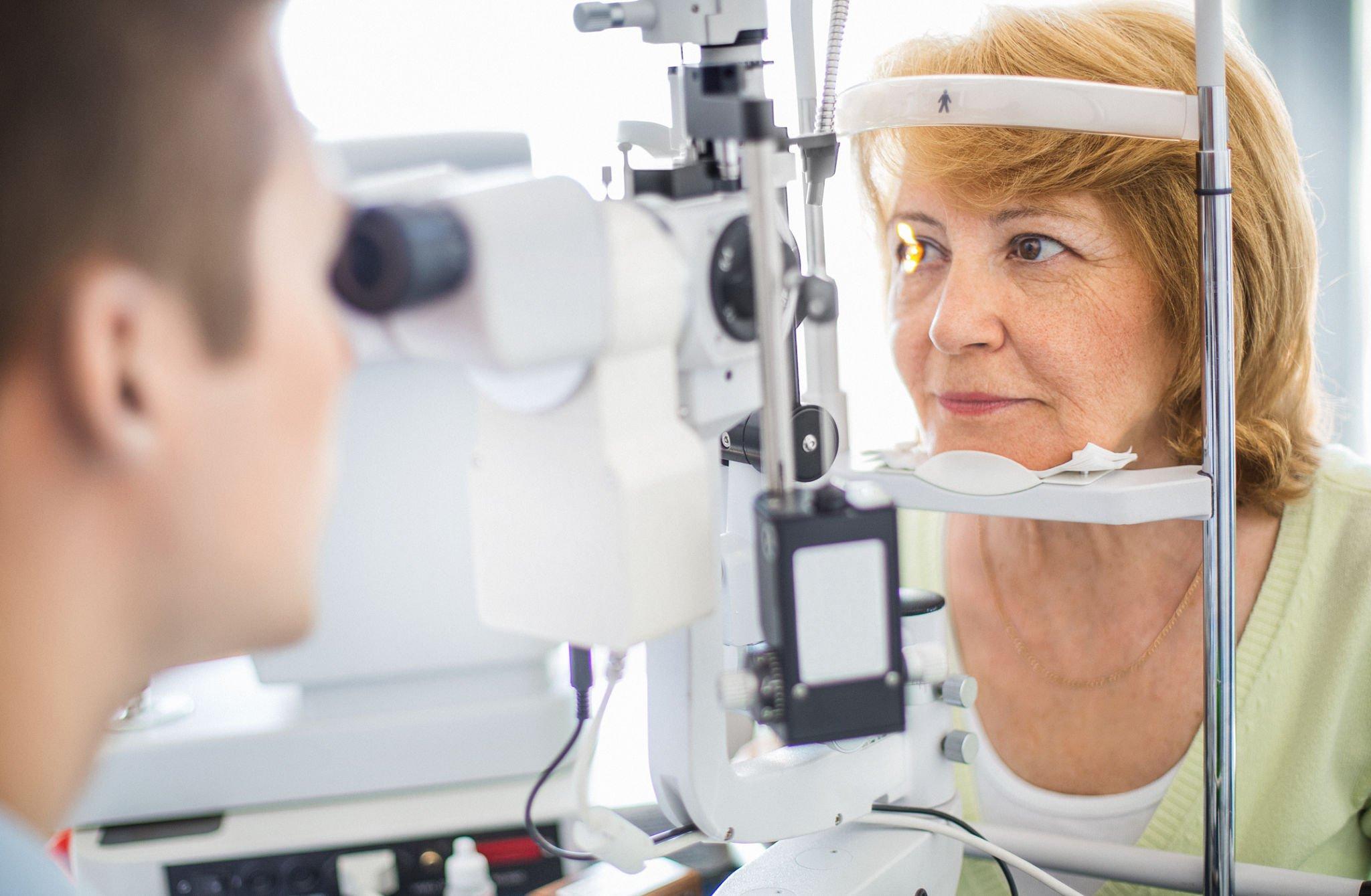Education is a fundamental right for all, and for individuals with low vision, innovative educational approaches can be transformative. In this article, we’ll explore how innovative methods are revolutionizing the educational landscape for those with low vision, providing them with opportunities to thrive in a world of learning.
What is Low Vision?
Low vision is a visual impairment that significantly impacts an individual’s ability to see, even with the use of traditional eyeglasses, contact lenses, or medical treatments. Unlike complete blindness, where there is no functional vision, individuals with low vision have some remaining sight, but it is often limited and insufficient to perform daily tasks effectively.
Characteristics of Low Vision:
Reduced Visual Acuity: Low vision often involves a decrease in visual acuity, which means individuals may have difficulty reading small print, recognizing faces, or distinguishing fine details.
- Limited Visual Field: Some people with low vision experience a restricted visual field, making it challenging to perceive objects or obstacles in their peripheral vision.
- Difficulty with Contrast: Low vision can also affect the ability to perceive contrasts between objects and their backgrounds, making it challenging to read text or navigate uneven surfaces.
- Impaired Color Vision: In some cases, low vision can lead to color perception difficulties, where distinguishing between different colors becomes problematic.
Types of Eye Conditions Causing Low Vision:
Low vision can result from various eye conditions, including:
- Macular Degeneration: This age-related condition affects the macula, the central part of the retina, leading to central vision loss.
- Glaucoma: Increased intraocular pressure damages the optic nerve, resulting in peripheral vision loss.
- Diabetic Retinopathy: High blood sugar levels damage blood vessels in the retina, leading to vision changes and potential blindness.
- Retinitis Pigmentosa: A genetic disorder causing a gradual loss of peripheral vision.
- Cataracts: Clouding of the eye’s natural lens, leading to blurred vision.
- Optic Nerve Atrophy: Damage to the optic nerve, which can result from various causes, including injury or disease.
It’s important to note that low vision is not a single, uniform condition; it varies from person to person. The impact of low vision on an individual’s life can range from mild difficulties to significant challenges. Fortunately, there are innovative approaches and resources available to help individuals with low vision overcome these challenges and lead fulfilling lives.
Low Vision Causes
Understanding the causes of low vision is crucial for both individuals and healthcare professionals. Low vision can result from various eye conditions, diseases, or injuries, each with its unique characteristics and challenges. Here are some common causes of low vision:
1. Macular Degeneration
Macular degeneration is a leading cause of low vision, particularly among older adults. It affects the macula, the central part of the retina responsible for sharp central vision. There are two main types:
- Dry Macular Degeneration: Characterized by the gradual breakdown of macular cells, leading to a slow decline in central vision.
- Wet Macular Degeneration: Involves the growth of abnormal blood vessels under the macula, leading to rapid and severe vision loss.
2. Glaucoma
Glaucoma is a group of eye conditions that damage the optic nerve, often due to increased intraocular pressure. It typically results in peripheral vision loss, which can progress to tunnel vision if left untreated.
3. Diabetic Retinopathy
Diabetic retinopathy is a complication of diabetes. High blood sugar levels damage the blood vessels in the retina, leading to vision changes. It can cause both central and peripheral vision impairment.
4. Retinitis Pigmentosa
Retinitis pigmentosa is a genetic disorder that causes gradual peripheral vision loss. Over time, it can lead to night blindness and tunnel vision.
5. Cataracts
Cataracts involve the clouding of the eye’s natural lens, resulting in blurred vision. While cataracts are treatable with surgery, they can still cause low vision if left unaddressed.
6. Optic Nerve Atrophy
Damage to the optic nerve, which transmits visual information from the eye to the brain, can result in low vision. This damage can occur due to head injuries, diseases, or other underlying conditions.
These are just a few of the common causes of low vision. It’s essential for individuals experiencing vision changes to seek prompt medical evaluation and vision rehabilitation services to enhance their quality of life and adapt to their unique visual challenges. Innovative approaches and technologies continue to provide hope and opportunities for those living with low vision.
Traditional Educational Challenges
In traditional educational settings, students with low vision face numerous challenges. Conventional teaching methods and materials are often not optimized for their needs, resulting in barriers to effective learning.
Assistive Technologies
Assistive technologies are at the forefront of innovative educational approaches for low vision learners. These technologies bridge the gap by providing specialized tools and resources. Screen readers, magnification software, and text-to-speech applications are just a few examples.
Inclusive Classroom Practices
Creating inclusive classrooms is vital for students with low vision. Teachers are increasingly being trained to accommodate diverse learning needs, and awareness about creating accessible content is growing.
Braille and Tactile Learning
Braille remains a cornerstone of education for individuals with low vision. Tactile learning materials, such as raised-line drawings and 3D models, enhance the learning experience and allow students to grasp complex concepts.
Audio-Based Learning
Audio-based learning materials, including audiobooks and podcasts, are instrumental in making information accessible to low vision learners. These resources provide an alternative way to absorb knowledge.
Adaptive Curriculum
Adaptive curriculum design tailors learning experiences to individual needs. With adaptive technologies, content can be adjusted to match a student’s pace and preferences, ensuring a personalized education.
Teacher-Student Collaboration
Collaboration between teachers and students is key to adapting innovative approaches. By involving students in the creation of personalized learning plans, educators empower them to take ownership of their education.
Sensory Learning
Multisensory learning experiences engage multiple senses. By incorporating touch, sound, and other sensory inputs, educators create immersive learning environments that benefit low vision students.
Digital Accessibility
Ensuring digital accessibility is essential in the digital age. Websites, e-books, and online courses are becoming increasingly accessible, enabling low vision learners to navigate the online world effectively.
Navigating STEM Subjects
Low vision students pursuing STEM fields receive specialized support. Tactile graphics, screen-reading software, and accessible lab equipment are essential tools for success.
Empowering Independence
Beyond academics, education fosters independence and self-advocacy skills. Low vision students gain confidence as they navigate educational challenges and learn to advocate for their needs.
Beyond the Classroom: Life Skills Education
Education extends beyond traditional subjects. Life skills training equips individuals with low vision to handle daily tasks, such as mobility, organization, and communication, preparing them for independence beyond school.
Success Stories
Inspirational success stories abound among individuals with low vision. These role models prove that with determination, support, and innovative educational approaches, the sky’s the limit for what can be achieved.
Conclusion
Innovative educational approaches are transforming the learning landscape for individuals with low vision. By embracing assistive technologies, inclusive practices, and personalized learning, we can ensure that everyone has equal access to the world of education. Let’s continue to foster inclusivity and support for those with low vision, allowing them to reach their full potential.
FAQs
1. What is low vision, and how does it differ from blindness?
Low vision refers to a significant visual impairment that cannot be fully corrected, while blindness typically means no functional vision. Low vision individuals have some remaining sight.
2. Are there any notable figures with low vision who achieved academic success?
Yes, many individuals with low vision, such as Helen Keller and Louis Braille, have made significant contributions to society and education.
3. How can teachers make classrooms more inclusive for low vision students?
Teachers can use accessible materials, provide alternative formats, and create an inclusive atmosphere where students feel comfortable discussing their needs.
4. What are some popular assistive technologies for low vision learners?
Popular assistive technologies include screen readers like JAWS, magnification software like ZoomText, and voice-controlled devices like Amazon Echo.
5. Is Braille still relevant in today’s digital age?
Yes, Braille remains essential for low vision individuals, as it provides a tactile way to read and write. It complements digital tools and enhances literacy.
6. How can I create accessible digital content for low vision audiences?
Ensure your content is compatible with screen readers, use accessible document formats, and provide alternative text for images and graphics.
7. What resources are available for educators to learn about teaching low vision students?
Many organizations offer training and resources for educators, such as the American Foundation for the Blind (AFB) and the Perkins School for the Blind.
8. Can low vision students participate in sports and extracurricular activities?
Yes, low vision students can participate in a wide range of sports and extracurricular activities with appropriate accommodations and support.
9. Are there scholarships available for low vision students pursuing higher education?
Yes, there are numerous scholarships and financial aid opportunities specifically designed for students with low vision.
10. How can I support organizations that promote accessibility and inclusivity for low vision individuals?
You can support organizations like the National Federation of the Blind (NFB) or the American Council of the Blind (ACB) through donations, volunteering, or advocacy efforts to promote accessibility and inclusivity.


 Home
Home










